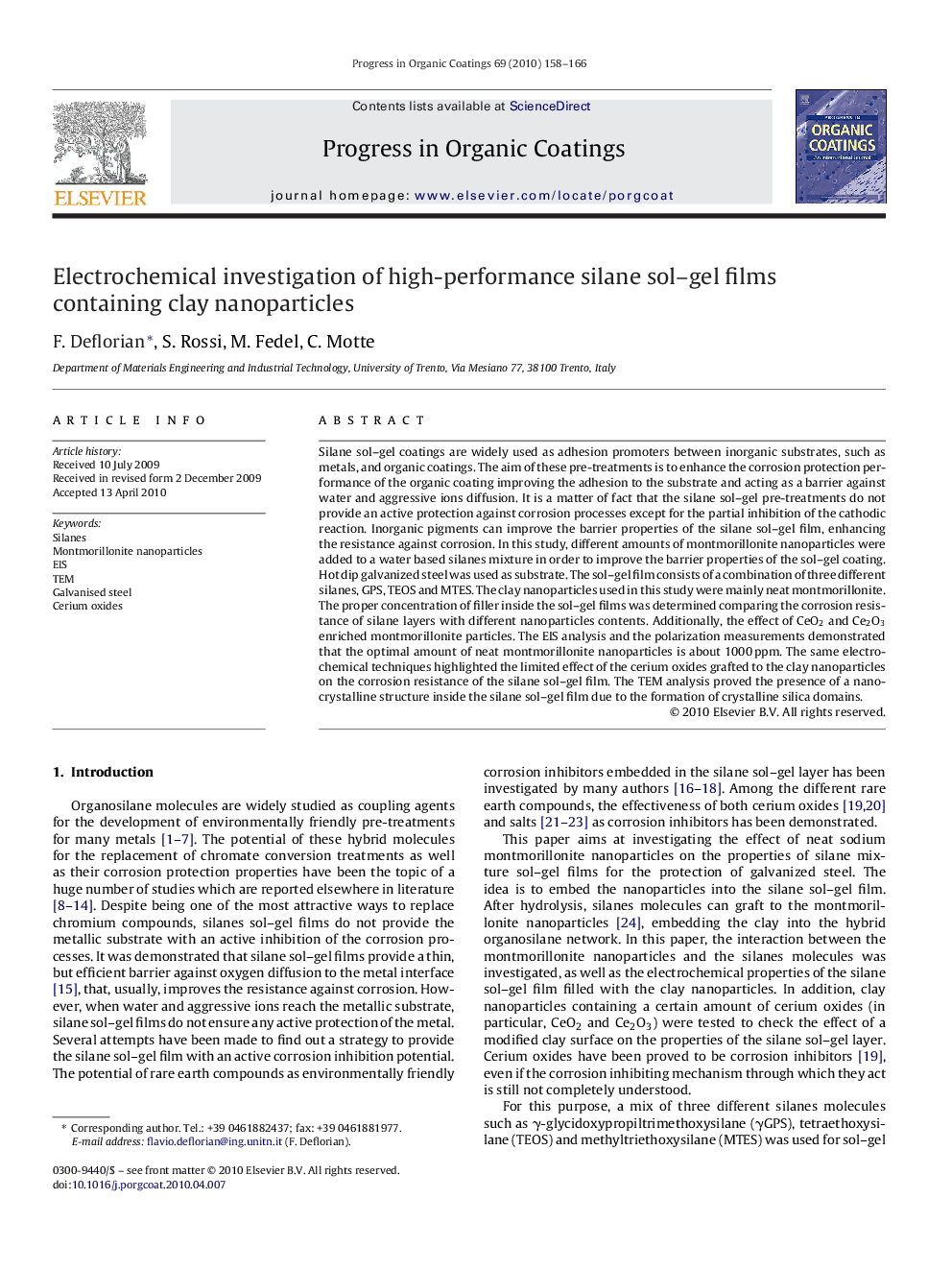| Article ID | Journal | Published Year | Pages | File Type |
|---|---|---|---|---|
| 693633 | Progress in Organic Coatings | 2010 | 9 Pages |
Silane sol–gel coatings are widely used as adhesion promoters between inorganic substrates, such as metals, and organic coatings. The aim of these pre-treatments is to enhance the corrosion protection performance of the organic coating improving the adhesion to the substrate and acting as a barrier against water and aggressive ions diffusion. It is a matter of fact that the silane sol–gel pre-treatments do not provide an active protection against corrosion processes except for the partial inhibition of the cathodic reaction. Inorganic pigments can improve the barrier properties of the silane sol–gel film, enhancing the resistance against corrosion. In this study, different amounts of montmorillonite nanoparticles were added to a water based silanes mixture in order to improve the barrier properties of the sol–gel coating. Hot dip galvanized steel was used as substrate. The sol–gel film consists of a combination of three different silanes, GPS, TEOS and MTES. The clay nanoparticles used in this study were mainly neat montmorillonite. The proper concentration of filler inside the sol–gel films was determined comparing the corrosion resistance of silane layers with different nanoparticles contents. Additionally, the effect of CeO2 and Ce2O3 enriched montmorillonite particles. The EIS analysis and the polarization measurements demonstrated that the optimal amount of neat montmorillonite nanoparticles is about 1000 ppm. The same electrochemical techniques highlighted the limited effect of the cerium oxides grafted to the clay nanoparticles on the corrosion resistance of the silane sol–gel film. The TEM analysis proved the presence of a nano-crystalline structure inside the silane sol–gel film due to the formation of crystalline silica domains.
